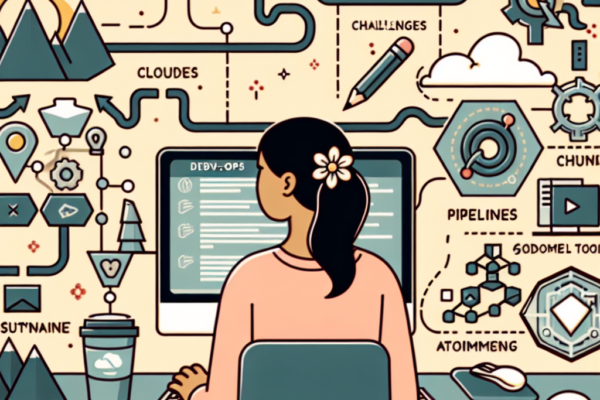In the fast-paced and high-stress world of software development, burnout is a common and often unspoken challenge. This article delves into the personal journey of a developer who experienced burnout firsthand and shares how they navigated their way back to mental balance and well-being. Whether you’re a seasoned developer or just starting your career, this story offers valuable insights and practical tips to help you avoid burnout and maintain your mental health.
Understanding Developer Burnout
Burnout in the tech industry is a serious issue that can have far-reaching consequences. It is characterized by chronic stress that leads to physical and emotional exhaustion, cynicism, and a sense of ineffectiveness. Developers are particularly susceptible to burnout due to the demanding nature of their work, long hours, and the constant pressure to meet deadlines and deliver high-quality code. The culture of ‘always-on’ and the expectation to continuously learn and adapt to new technologies can also contribute to feelings of overwhelm and burnout.
The Personal Journey
Meet Alex, a software developer who has worked in the tech industry for over a decade. Alex has always been passionate about coding and solving complex problems. However, this passion began to wane as the pressures of the job took a toll on their mental health. Long hours, tight deadlines, and the relentless pace of the industry led to a state of burnout that affected every aspect of Alex’s life.
Initially, Alex tried to push through the exhaustion, believing that it was just part of the job. But as the symptoms of burnout worsened—constant fatigue, irritability, and a lack of motivation—Alex realized that something needed to change.
The Turning Point
The breaking point came when Alex found themselves unable to focus on even the simplest tasks. They felt disconnected from their work and their colleagues, and their personal life was suffering. Recognizing the severity of the situation, Alex decided to take a step back and reassess their priorities.
Seeking help from a mental health professional, Alex began to understand the root causes of their burnout. They learned that the constant pressure to perform, the lack of work-life balance, and the absence of self-care were all contributing factors. Armed with this knowledge, Alex started to make changes to their lifestyle and work habits.
Strategies for Recovery
Alex’s journey from burnout to balance involved a combination of personal and professional strategies. Here are some of the key steps they took:
- Setting Boundaries: Alex began to set clear boundaries between work and personal life. This included designating specific work hours and avoiding work-related tasks during their off-time. They also communicated these boundaries to their team and supervisor, ensuring that everyone understood the importance of respecting their time.
- Mindfulness and Meditation: Alex started practicing mindfulness and meditation to manage stress and improve their mental clarity. These practices helped them stay centered and focused, reducing the impact of work-related stress on their overall well-being.
- Regular Exercise: Incorporating regular physical activity into their routine was another crucial step. Exercise not only helped Alex feel better physically but also provided a much-needed mental break from the demands of their job.
- Time Off: Taking regular breaks and vacations was essential for Alex’s recovery. They learned that short breaks throughout the day, as well as longer periods of time off, were necessary to recharge and maintain their mental health.
- Seeking Support: Alex found it helpful to talk to others who were going through similar experiences. They joined a support group for developers and also reached out to trusted colleagues and friends for advice and encouragement.
Building a Supportive Work Environment
Beyond personal strategies, Alex also worked on creating a more supportive work environment. They advocated for mental health initiatives within their company and helped to implement policies that promoted work-life balance and employee well-being. Some of the changes they helped to facilitate include:
- Flexible Working Hours: Encouraging the company to adopt flexible working hours, allowing employees to work when they are most productive and take breaks when needed.
- Mental Health Days: Promoting the use of mental health days as a way for employees to take care of their mental well-being without fear of stigma or repercussions.
- Team Building Activities: Organizing regular team-building activities that focus on relaxation and fun, rather than just productivity.
- Professional Development: Highlighting the importance of professional development and providing resources for employees to learn and grow at a sustainable pace.
The Importance of Self-Care
Self-care is a vital component of maintaining mental health and preventing burnout. For Alex, this meant prioritizing activities that brought joy and relaxation. They started reading more, exploring new hobbies, and spending quality time with family and friends. These activities not only provided a welcome break from the stress of work but also helped Alex rediscover their passion for life.
Alex also emphasized the importance of a healthy diet and adequate sleep. They found that eating nutritious meals and getting enough rest were essential for both physical and mental health. Small changes like these can have a significant impact on overall well-being and resilience.
Recognizing the Signs of Burnout
Burnout can be insidious, creeping up slowly over time. Recognizing the signs early is crucial for taking action. Some common signs of burnout include:
- Exhaustion: Feeling consistently tired and lacking energy, even after a good night’s sleep.
- Cynicism: Developing a negative and cynical outlook on work and life.
- Inefficacy: Feeling like your efforts are not making a difference and that you are not accomplishing anything meaningful.
- Isolation: Withdrawing from social interactions and feeling disconnected from others.
- Physical Symptoms: Experiencing headaches, muscle tension, and other physical symptoms of stress.
If you recognize any of these signs in yourself or a colleague, it’s important to take action before burnout takes a deeper hold.
Creating a Balanced Lifestyle
A balanced lifestyle is key to maintaining mental health in the long term. For Alex, this meant finding a healthy equilibrium between work and personal life. They focused on the following areas:
- Workload Management: Prioritizing tasks and delegating when possible. Learning to say ‘no’ to requests that would overextend their capacity.
- Time Management: Using tools and techniques to manage their time more effectively. This included breaking down large projects into smaller, manageable tasks and setting realistic deadlines.
- Communication: Being open and honest with their team and supervisor about their workload and any challenges they were facing. This helped to build trust and support within the team.
- Hobbies and Interests: Investing time in activities outside of work that they enjoyed. This helped to keep them motivated and fulfilled.
- Mental Health Awareness: Staying informed about mental health and sharing resources with colleagues to promote a culture of awareness and support.
Conclusion
From burnout to balance, Alex’s journey is a testament to the power of self-care, boundary-setting, and a supportive work environment. It’s a reminder that mental health is just as important as physical health and that taking care of ourselves should be a top priority. Whether you’re a developer facing burnout or a manager looking to create a more supportive workplace, Alex’s story offers practical and inspiring advice to help you navigate the challenges of the tech industry and find balance in your life.
If you or someone you know is struggling with burnout, remember that it’s okay to ask for help. Reaching out to a mental health professional, setting boundaries, and prioritizing self-care can make a world of difference. Let’s work together to create a tech industry that values and supports the mental well-being of all its members.




